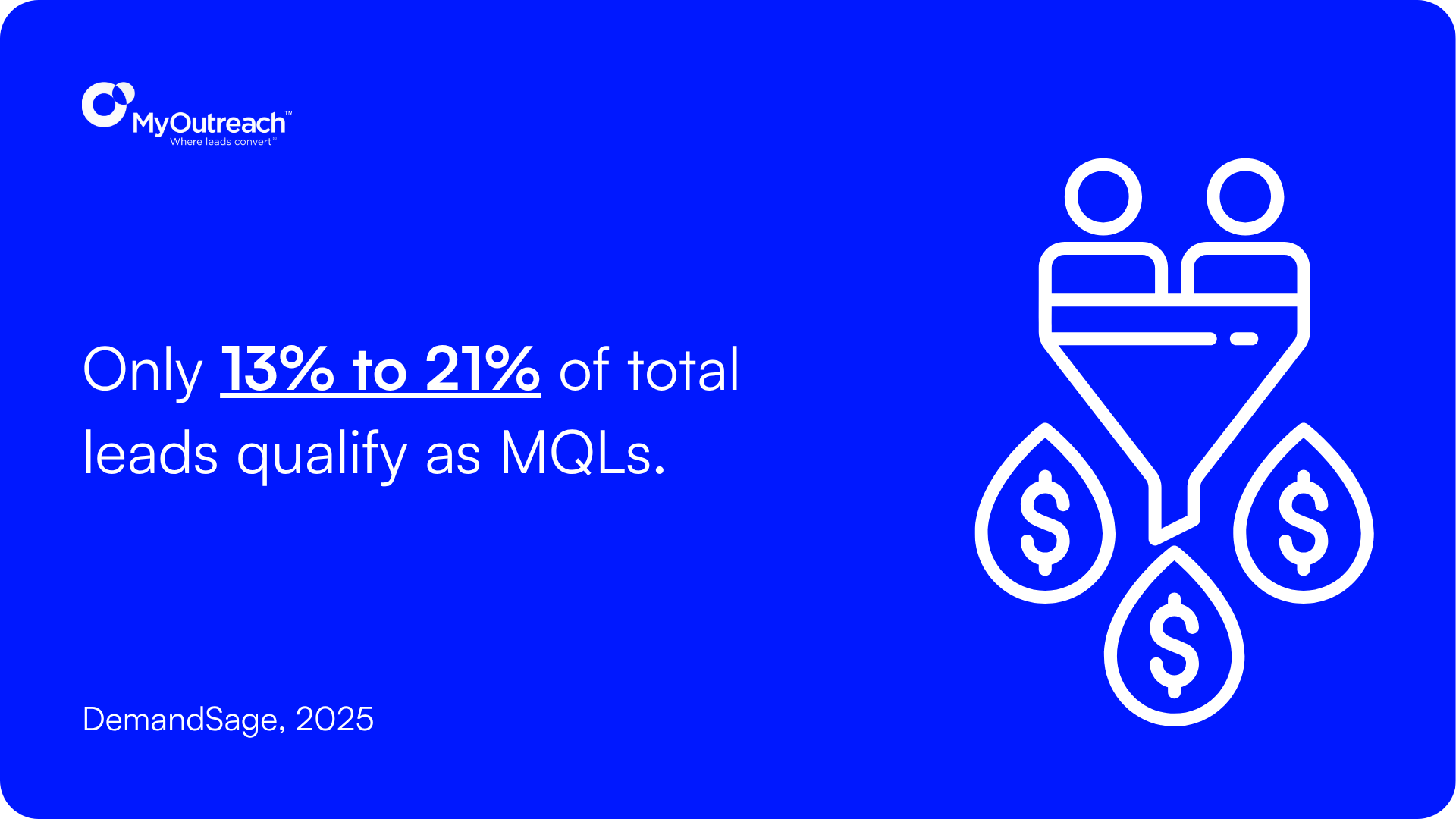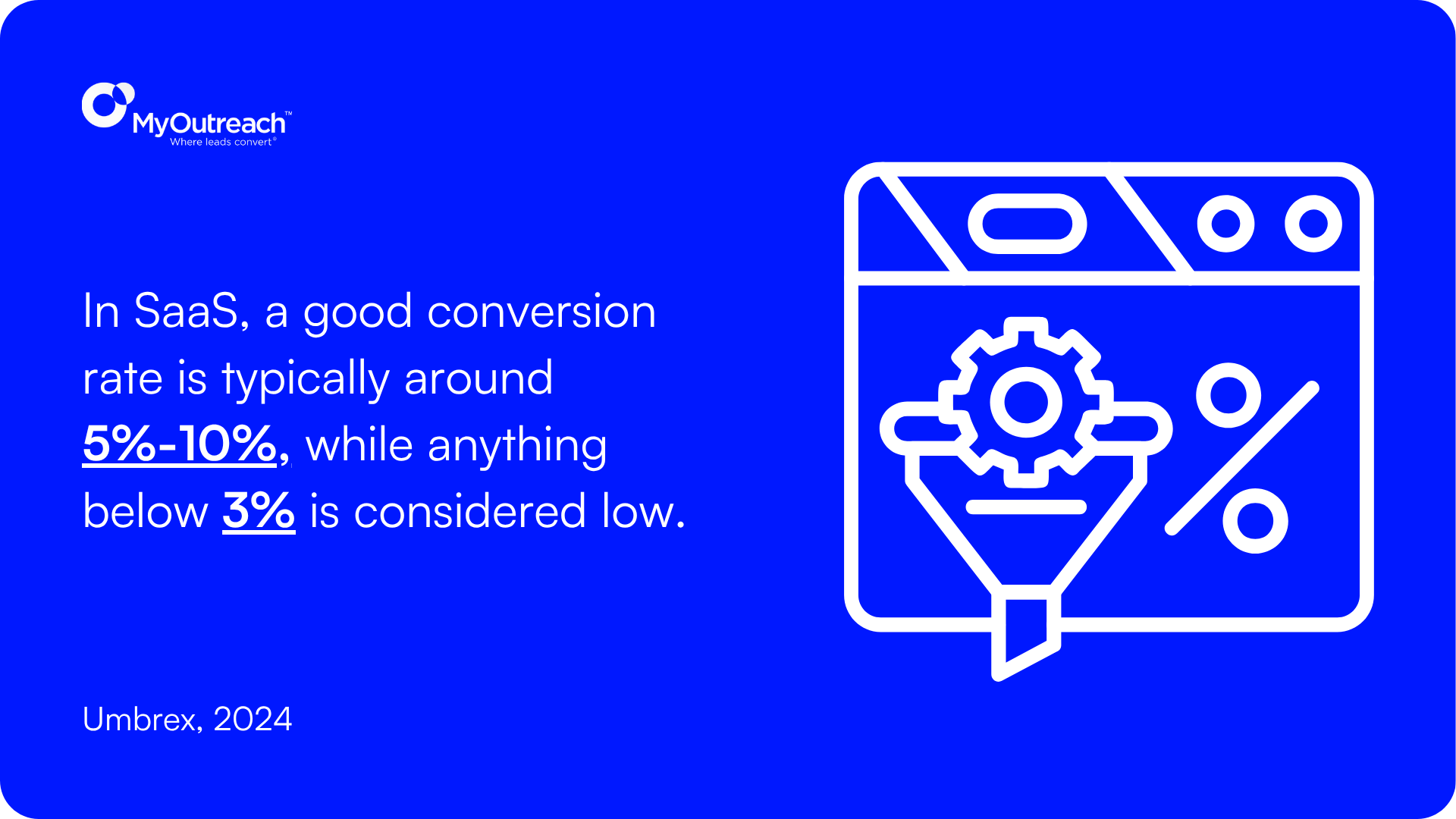Before you invest more in lead generation, it’s important to understand how to accurately calculate your ROI.
In SaaS, small improvements in ROI can translate into long-term success. Getting calculations right will motivate you to prioritise high-value channels, reduce wasted spend and build a predictable revenue engine.
In this blog post, we'll walk through how to calculate SaaS lead-generation ROI, why it matters, and how to apply these calculations in real-world scenarios.
📖 Useful read: SaaS Lead Generation Cost In 2026: What To Expect
Understanding ROI & Key Metrics in SaaS Lead Generation
When we're talking about SaaS lead generation ROI, we're talking about how much return you get from your investment in generating leads, specifically for a SaaS model. But because SaaS has unique characteristics (subscriptions, renewals, expansions), you'll need to change up the classic ROI formula a bit.
Classic ROI vs. SaaS-Specific
- Classic ROI = (Revenue - Cost) / Cost
- For SaaS, use a different approach: include the customer lifetime value (LTV), lead conversion rate, and alignment with recurring revenue.
Example: You spend £100k on a campaign, you generate leads, convert 50 to customers at £1,000 ARR each, with a 3-year average customer life. The ROI will differ based on customer retention, upsell, and churn.
Key Metrics to Track
Here are essential metrics to plug into your calculation:
- Cost of lead generation (ad spend, agency, content, tools).
- Number of leads generated.
- Lead-to-MQL conversion rate.
- MQL-to-customer conversion rate.
- Average Revenue Per User (ARPU) or Average Revenue Per Account (ARPA).
- LTV or projected lifetime revenue (consider churn).
- Time-to-value or payback period.
Keep in mind that on average, only 13% to 21% of total leads qualify as MQLs. So, if you're generating 1000 leads per month, you should expect 130-210 MQLs. Understanding this baseline helps you set realistic targets and identify when your qualification process is too strict or too lenient.

Step-By-Step: How to Calculate SaaS Lead Generation ROI
Let’s walk through a structured calculation you can replicate.
Step 1 - Define Total Cost
Add up all your lead generation costs for a period (e.g., quarter): paid media, content creation, agency fees, and landing pages.
Example: £120,000 for Q2
Step 2 - Calculate the Number of Leads & Their Conversion to Paying Customers
Supposed 2,000 leads get generated, from historical data:
- Lead → MQL rate = 15% → 300 MQLs.
- MQL → Customer rate = 10% → 30 new customers.
Step 3 - Determine Revenue Per Customer & Expected LTV
If your average new customer signs up for £1,200 ARR and your average LTV is 3 years (so £3,600 revenue per customer), you have:
- 30 customers × £1,200 = £36,000 first-year ARR
- Over 3 years: 30 × £3,600 = £108,000 total revenue.
Step 4 - Calculate ROI
Using the classic formula: ROI = (Return - Cost) / Cost
Return = £108,000; Cost = £120,000 → ROI = (108,000 - 120,000) / 120,000 = -10% (so, negative ROI in this scenario).
Alternatively, you might track first-year only: (36,000 – 120,000) / 120,000 = -70%. Not good.
So you need either higher conversion rates, higher ARPU, longer LTV, or lower Cost.
Step 5 - Refine via Better Assumptions & Scenarios
Let's improve: if you increase the conversion rate from MQL→Customer to 20%, you get 300 MQLs × 20% = 60 customers. At £3,600 each lifetime = £216,000 revenue. ROI = (216,000 - 120,000) / 120.000 = 80%.
Now you're in a healthy position.

Real-World Examples & Case Study
Understanding SaaS Lead Generation ROI becomes more concrete when you see real-world case studies.
Case Study - Customer Success Investment
According to a Forrester Research Total Economic Impact (TEI) study, a large company investing in a consolidated Customer Success team saw a 107% risk-adjusted ROI within three years.
While this talks about Customer Success (post-lead generation), it highlights how ROI in SaaS is multi-year and goes further than initial acquisition.
Industry Benchmarks & Data
- Lead generation is the top growth priority for 34% companies.
- For SaaS companies, a high conversion rate is 5%-10% and a low conversion rate is considered below 3%.
Evidently, if your lead-to-customer conversion is below 3% in SaaS, ROI will significantly suffer.
Example Breakdown
Imagine this scenario, SaaS company X:
- Cost: £150,000 for two campaigns.
- Leads: 5,000.
- Conversion to paying users: 1,5% = 75 customers.
- ARPU: £2,000 ARR; average lifetime: 4 years → LTV revenue per customer: £8,000.
- Revenue: 75 × £8,000 = £600 000.
- ROI: (600,000 - 150,000) / 150,000 = 300%
You can benchmark your program from this: Are you getting similar conversions? If not, you know where the friction is.
Best Practices to Improve SaaS Lead Generation ROI
Improving SaaS Lead Generation ROI requires strategic alignment, high-quality data, and a long-term revenue mindset. Below, we discuss best practices to help teams drive measurable ROI gains.
Align Marketing & Sales
Marketing and Sales misalignment is one of the biggest contributors to wasted spend and slow pipeline velocity. When both teams operate with different definitions, KPIs, and systems, leads tend to fall through the cracks.
According to Forrester research, aligned teams grow 19% faster and are 15% more aligned than unaligned teams.
Ways to strengthen alignment:
- Establish clear MQL/SQL definitions:
Both teams should agree on what qualifies as an MQL and what triggers it to move to a SQL. This prevents marketing from passing unqualified leads and reduces sales frustration.
- Create SLAs for lead follow-ups:
A structured SLA (e.g. responds within 10-30 minutes) increases conversion rates. If you respond within the first minute, lead conversion rates increase by 391%. Waiting for one more minute can cut that conversion boost by half.
- Use shared dashboards:
When both teams track lead sources, pipeline stages, and conversion rates in the same platform, accountability increases and conversions become data-driven.
Example: If marketing generates 500 leads per month but sales only contacts 60% of them, improving follow-up speed and communication could instantly increase the number of opportunities created, without increasing spend.
Focus on Lead Quality
Having a high volume of leads means nothing if those leads never convert. As mentioned before, only 13% to 21% of leads qualify as MQLs - so you know how important it is to look at the quality and not quantity of leads.
How to improve lead quality:
- Use lead scoring and intent data:
Platforms such as 6sense or ZoomInfo can surface leads with strong buying signals, so investment goes into more conversions rather than cold, low-intent contacts.
- Segment by buying persona and industry:
Personalise messages for each persona (e.g., CTO vs. Product Manager) to improve relevance and engagement.
- Nurture mid and lower intent leads:
Many leads aren't ready to book a demo right away. Multi-touch nurturing (email, product education, case studies) improves lead conversion to MQLs.
Example: A SaaS cybersecurity company might score leads higher if they’ve downloaded a risk assessment report and visit the pricing page - showing clear intent indicators that justify increasing targeting spend.
Track LTV & Churn
One of the unique challenges in SaaS is that ROI heavily depends on LTV. Even if your acquisition numbers look strong, high churn can destroy long-term ROI.
Key metrics to track:
- ARPU (Average Revenue Per User).
- Churn rate (monthly or annual).
- Expansion revenue (upsells, cross-sells).
- Customer Lifetime Value (LTV).
SaaS teams should model ROI over 3-5 years, not just the first year. A lead that costs £500 to acquire might seem expensive, but if the customer stays for 3 years and expands, then ROI becomes extremely high.
Scenario example: If your average customer lifetime drops from 4 years to 2 years, your LTV is reduced by 50%. This means your once-profitable CAC might be unprofitable now. Tracking this early helps you adjust pricing, onboarding, or churn-reduction strategies.

Measure at Each Funnel Stage
Full-funnel visibility is key to improving ROI. Without it, you can’t identify which stage is causing leakage.
Key metrics to measure:
- Cost per Lead (CPL)
- Cost per MQL
- Cost per SQL
- Customer Acquisition Cost (CAC)
- Sales cycle length
- Payback period
- ROI over multiple years
Tracking each step helps identify gaps. For example:
- High CPL but strong MQL rates → marketing is working well; optimise creative to reduce Cost.
- Strong MQL volume but low SQL conversion → sales qualification or follow-up needs improvement.
- Strong pipeline but slow close rates → revisit demo flows, pricing, or objection handling.
If the drop-off from SQL → Opportunity is unusually high, the issue might not be lead quality - it could be sales enablement, messaging, or product fit for that segment.
Use Data & Automation
Data accuracy also plays a key role in ROI. Forrester reports that 21% of B2B marketing budgets are wasted due to insufficient data, meaning a quarter of your leads may bounce, be mis-segmented, or never engage. This waste impacts both ROI and pipeline predictability.
What to implement:
Clean your database regularly:
- Remove duplicates, improve contact fields, and validate emails quarterly to maintain accuracy.
Use marketing-automation tools:
- Platforms like HubSpot, Marketo, or Pardot automate lead scoring, segmentation, and attribution, ensuring spend is allocated to the best-performing channels.
Use analytics to optimise your channel mix:
- Look at first-touch, last-touch, and multi-touch attribution to identify where your highest-ROI leads originate.
Example: A SaaS company discovers that although paid search is expensive, those leads have a 2× higher LTV than leads from social ads - justifying a higher budget allocation despite the higher initial CPL.
📖 You might also like: SaaS Lead Generation Personalisation Tactics for Success
Conclusion
Improving SaaS lead generation is about generating the right leads, tracking the full customer lifecycle, and making data-driven decisions across Marketing and Sales. By understanding your LTV, optimising funnel performance, improving data quality, and aligning internal teams, you can build a predictable, scalable, and profitable growth engine. Use the formulas and frameworks in this guide to realistically assess your ROI, identify gaps, and improve your strategy for long-term success.
How MyOutreach Helps Improve SaaS Lead Generation ROI
If you want to improve SaaS lead-generation ROI consistently, you need high-quality, targeted outreach. This is exactly where we can help.
MyOutreach helps B2B SaaS companies boost lead quality, pipeline, and conversions by combining targeted, personalised outreach and high-quality data, whilst reducing wasted spend and increasing ROI.
We offer a proven, scalable system to increase pipeline predictability and ROI. Let’s chat!
FAQs
Q1. What’s the biggest factor affecting SaaS lead generation ROI?
The biggest drivers are conversion rates, LTV, and lead quality. Even small improvements in MQL→SQL or SQL→Customer conversion can multiply ROI.
Q2. How can I reduce Customer Acquisition Cost (CAC)?
Improve segmentation, tighten your ICP, automate follow-ups, and focus on channels that historically deliver higher-intent leads. Cleaning your data also reduces wasted spend.
Q3. Does outbound still deliver strong ROI for SaaS?
Yes - when done with targeted data, personalised messaging, and multi-touch workflows. Outbound can outperform inbound for niche SaaS markets when aligned with Sales.

.png)

.png)

.png)






